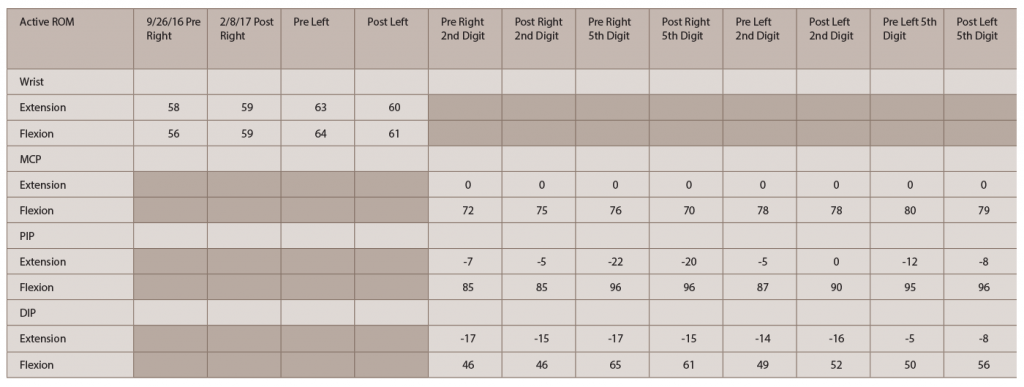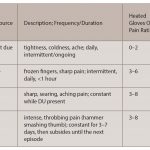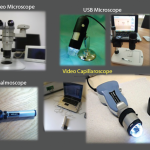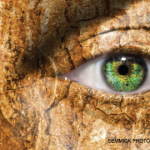Ischemic Digital Ulcers: There were multiple digital pitting scars in bilateral fingers and thumbs, but no DUs were present.
Secondary Outcome Measures
Strength: Strength was assessed in both hands. Right and left grip strength were 57.7 and 47.7 lbs., respectively. Lateral pinch was 13.3 lbs. on the right and 11 lbs. on the left. Two-point pinch was 7.3 lbs. on the right and 5 lbs. on the left. Three-point pinch was 16 lbs. on the right and 8.7 lbs. on the left.
Active Range of Motion: Active extension and flexion of the right wrist was 58º and 56º, respectively. Left wrist extension was 63º, and flexion was 64º. See Table 2 for 2nd and 5th digit values (p. 41).

(click for larger image)
Table 2: Active Range of Motion of Bilateral Wrists & Digits 2 & 5
Note: MCP=Metacarpophalangeal joint; PIP=Proximal interphalangeal joint; DIP=Distal interphalangeal joint
Sensation: All digits on the right hand scored 2.0 g, reduced protective sensation. The left thumb and digits 3–5 scored 2.0 g, reduced protective sensation. The left 2nd digit scored 4.0 g, loss of protective sensation.
Dexterity: On the nine-hole peg test, the right hand score was 21.83 seconds, and the left hand score was 21.92 seconds.
Hand Function & Joint Mobility: HAMIS test scores were 7 for the right hand and 1 for the left. Total score for Kapanji Modified Index was 78 out of a possible 100 points.
Intervention
Between Sept. 27, 2016, and Feb. 8, 2017, Barb wore the heated gloves at least six hours per day while awake, seven days per week (see Figure 2). In addition, she wore them during Raynaud’s episodes, when her fingers were painful, and when her fingers were cold or uncomfortable. Wearing time and pain ratings were documented on a calendar. Knit or vinyl gloves were worn over the heated gloves for protection from dirt and moisture. Gloves were removed for activities of daily living and when wearing them was not feasible. No formal ROM or strengthening exercises were performed during the intervention period. Barb continued task modification and finger protection strategies. Medication consisted of aspirin and amlodipine, as per her usual regimen. No pain medication was used.
Post-Intervention Measures
Post-intervention data was collected on Feb. 8, 2017, as shown in Tables 1–3 (pp. 35, 41 and 42). Between the intervention period of Sept. 26, 2016, and Feb. 8, 2017, Barb wore the heated gloves 8–16 hours per day, with an average wearing time of 10 hours per day.
Primary Measures
Pain: Post-intervention pain averages were calculated from Jan. 1–31, 2017. NRS ratings with and without gloves captured pain from Raynaud’s and acro-osteolysis. Post intervention, pain with gloves off averaged 3.1 and ranged from 1 to 8. Pain with gloves on averaged 0.29 and ranged from 0 to 1 (see Table 1).


